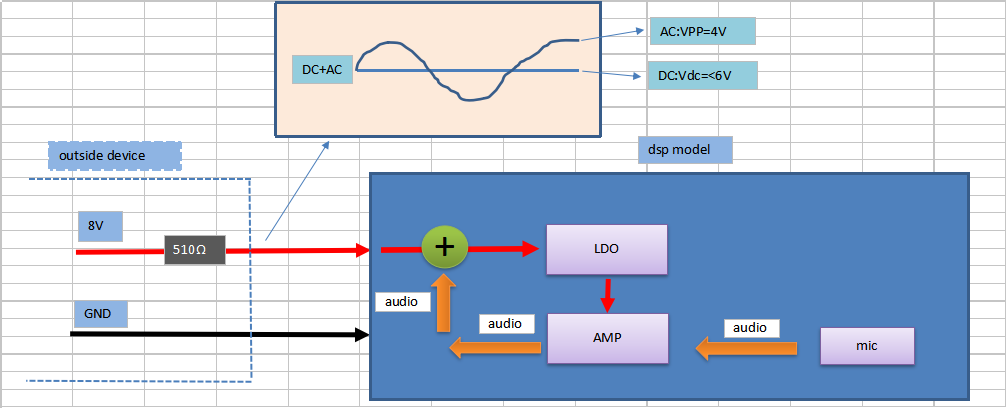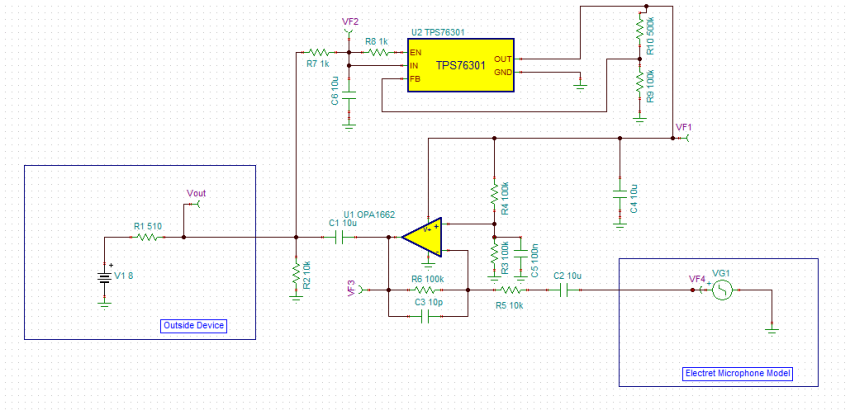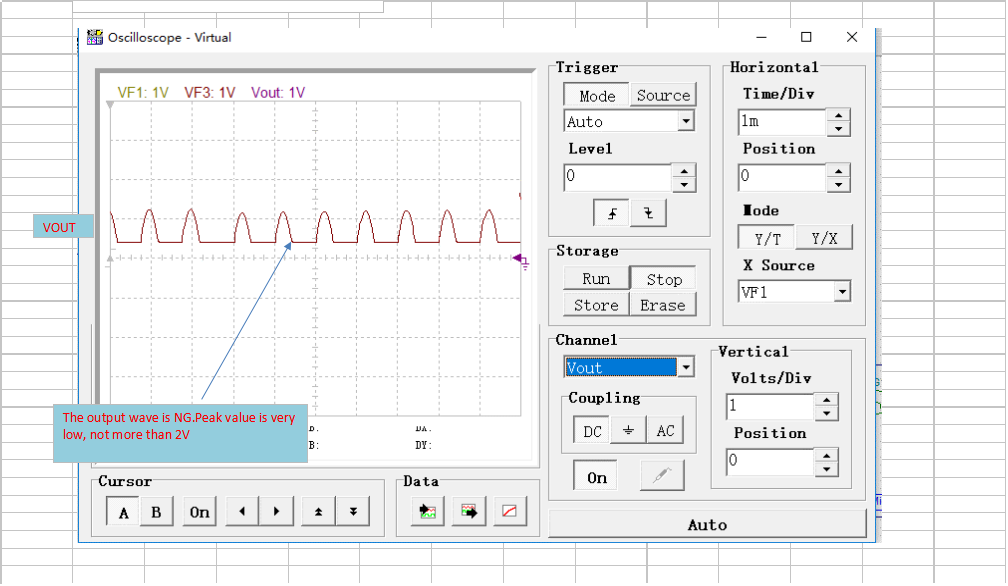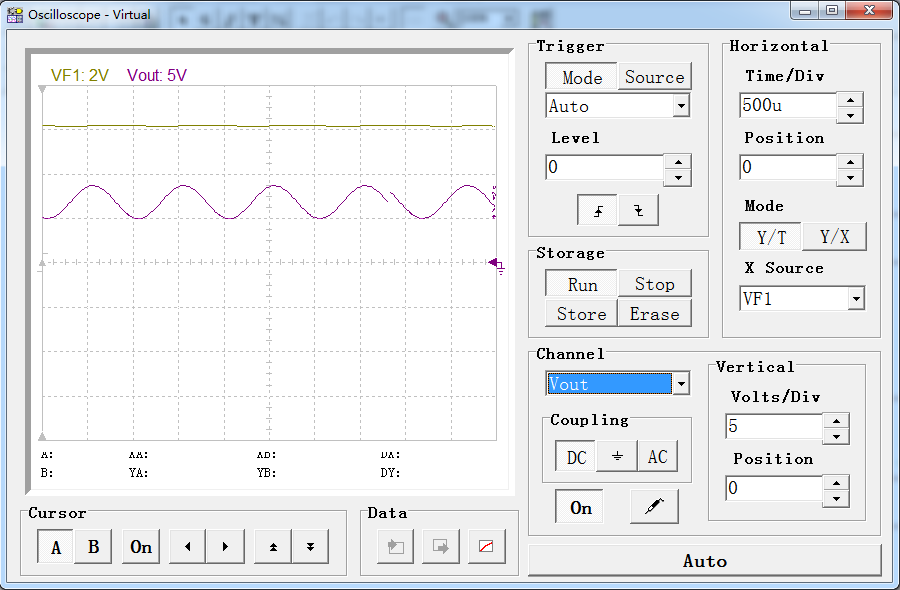Other Parts Discussed in Thread: OPA1642, TL971, RC4558, OPA1662, OPA1692
Hi TI,
My application is:
The external device only provides 8V power to the DSP module, and then the DSP module should output an audio signal with a peak to peak value of 4V and is superimposed on the 8V, and the external device is to demodulate the audio signal from the 8V.Is this usage OK?
The following diagram:





